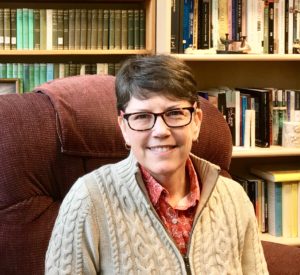
Walking along a beach in north Florida, I came upon a smack of jellyfish in the process of being blithely tossed upon the sand. By the looks of the forerunners, it was not going to end well for the jellyfish. While they seem to have muscles and a nervous system, they don’t have a brain, or apparently the ability to go against the tide. The oldest discovered jellyfish fossil dates to 500 million years ago, but its predecessor may have existed 600 million years ago, and some scientists propose it was the first animal. The fifty or so gelatinous blobs slowly baking in the sun do not invoke any feelings of familiarity or empathy. I give them a wide berth.
But not too far down the beach is a stranded starfish. I am immediately moved to rescue it. Is it because it has an echinoderm instead of amorphous gelatin? Is it because the starfish and I are closer on the evolutionary ladder? Perhaps it’s that a starfish has never stung me. Not so with Mr. Jellyfish.
As I reflect on these two sea creatures and their demise, I am reminded of Darwin’s recognition that pain and death are inevitable aspects of evolution. In her excellent article, Dr. Gloria Schaab, SSJ, reminds us:
So while these free processes produce abundant life and energy for the continued development of creation
and its creatures, they also create situations which are often termed ‘natural evil’ and which provoke difficult
questions about God in an evolving and suffering universe (“In the Travail of the Cosmos: God and the
Suffering in the Evolving Universe, The Heythrop Journal 58 [2017]: 91-107, here 920).
This natural aspect of pain and death isn’t so much a question of theodicy (how can God allow suffering in God’s creation) as much as it is an invitation to take “the evolutionary function of affliction at face value and [seek] to reflect on its workings in view of the God of Love made known in revelation” (Elizabeth Johnson, Ask the Beasts [New York: Bloomsbury, 2014], 17).
Schaab discusses three perspectives on how to understand God’s actions in light of this “natural evil.” The first, she attributes to the Anglican priest and mathematical physicist, John Polkinghorne, who proposes that God empties himself of divine attributes (kenosis) “in order to allow creation and its creatures the true freedom to be and to act according to their God-given natures. This God does with absolute freedom out of infinite love for finite creatures” (Schaab, 97).
The second perspective is derived from the work of another Anglican theologian and biochemist, Arthur Peacocke, who argues that in addition to thinking of God as “being” (who God is), we should also recognize that God is “becoming” (how God acts in the world).
[The] processes of creation are immensely costly to God in a way dimly shadowed by and reflected in the
ordinary experience of the costliness of creativity in multiple aspects of human creativity—whether it be in
giving birth, in artistic creation, or in creating and maintaining human social structures… Now, as we reflect on
the processes of creation through biological evolution, we can begin to understand that this… involved God’s
costly, suffering involvement in them on behalf of their ultimate fruition (Peacocke, Paths from Science
Towards God: The End of all our Exploring [Oxford: Oneworld, 2002], 86-87).
Finally, Schaab presents another image of God acting within the evolving and suffering cosmos, drawing from the work of Elizabeth Johnson and the Scriptures.
If God is creating and nurturing the world within the divine being—transcendently, incarnately, and
immanently—then God must be conceived as experiencing the world’s suffering within Godself, rather than
outside Godself. Pregnant with an evolving yet suffering cosmos, God can heal and transform suffering
through the love and creativity that characterize the Trinity (Schaab, 102).
To develop a trinitarian theology of divine suffering, she explores the images of She Who Is, Shekhinah, and Sophia concluding that “each one pulses with a specific form of creative suffering with and for creation and its creatures” (Schaab, 102). The cosmos isn’t suffering alone. It is literally enwombed by God.
And so back to my smack of dying jellyfish and lone rescued starfish. If the evolutionists are correct (pain and death are part of life) and if the theologians are correct (God is in the midst of that suffering), how are we, Earth thinking, to enter into this evolutionary process? Or as Francis of Assisi is remembered as asking, “What is mine to do?” That is the topic of the next blog!

A note to commentators: I am a Catholic Christian scholar for whom the Gospel directs not only my teaching, but my actions and hopefully my speech. I look forward to your insights, but I ask that in the spirit of Christian charity and courteous discourse you write with love and civility. Uncharitable or discourteous speech has no place in thoughtful dialogue.
“Let no evil talk come out of your mouths, but only what is useful for building up, as there is need, so that your words may give grace to those who hear” (Eph 4:29).
“What is mine to do?” I can hardly wait👍. Thanks. Jean
The Divine kiss of both and. Life is death and death is life.